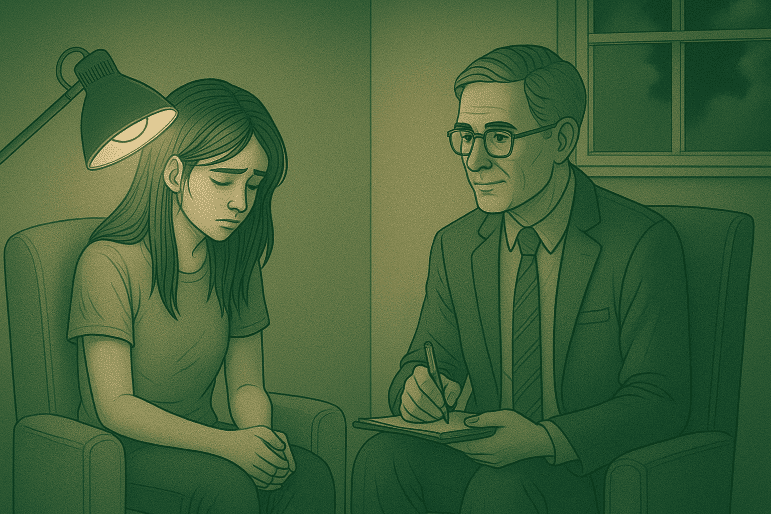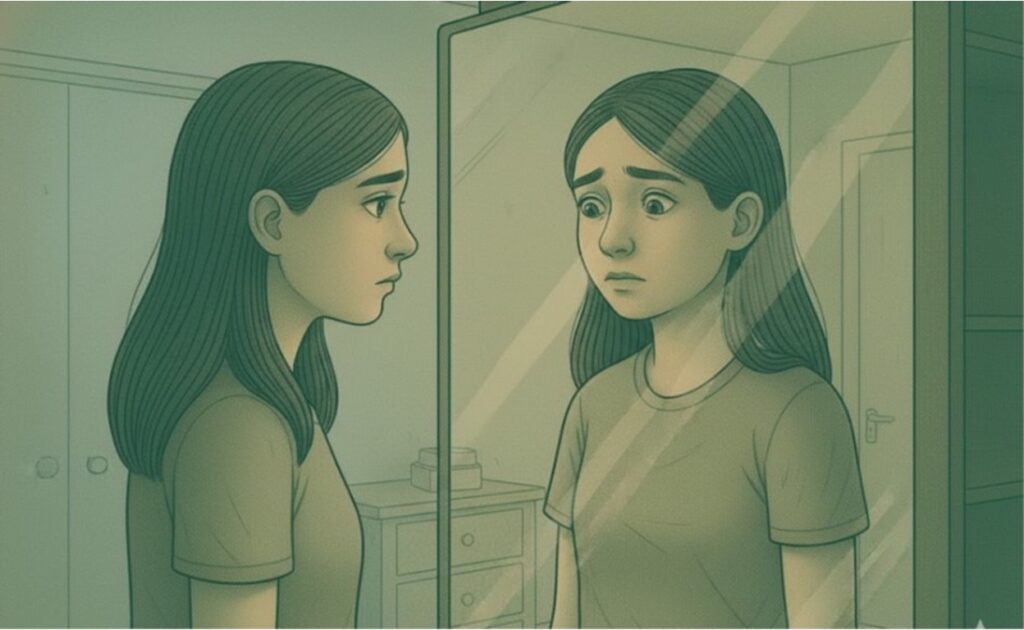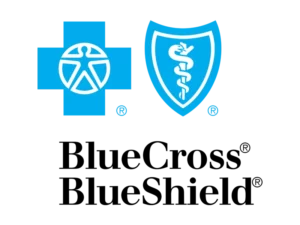Key Takeaways
- Self-harm is usually a coping mechanism for emotional pain, not an attention-seeking act.
- Early, compassionate intervention through therapy, understanding, and support significantly improves recovery.
- Evidence-based treatments like CBT, DBT, and EMDR help young people build emotional regulation and resilience.
- Open, non-judgmental communication and consistent family involvement are key to long-term healing.
- Mission Prep provides specialized, evidence-based programs that empower teens to recover, build healthy coping skills, and reclaim hope.
Why Young People Turn to Self-Harm
Self-harm usually reflects attempts to cope with overwhelming emotional distress when healthier strategies feel unavailable. Understanding these underlying motivations helps parents, educators, and health professionals address the root causes rather than just the behaviors.
Emotional Release and Control
Many teens use self-harm to manage intense emotions they cannot express or control. The act triggers endorphin release, temporarily easing emotional pain. It also provides a sense of predictability and control in lives that otherwise feel chaotic, reinforcing the behavior.
Expression of Internal Pain
Self-harm turns invisible emotional suffering into visible, tangible evidence. Teens who struggle to articulate their feelings may see wounds or blood as proof of their internal pain, helping them feel “real” when otherwise numb or disconnected.
Response to Trauma or Abuse
Trauma, including physical, emotional, or sexual abuse, often precedes self-harming behaviors. Self-inflicted pain can provide a sense of control or interrupt intrusive memories. Each additional adverse experience increases the risk, highlighting the need for trauma-informed care.
Connection to Mental Health Conditions
Self-harm often co-occurs with conditions like depression, anxiety, borderline personality disorder, or PTSD, though not all teens have a formal diagnosis. About 70% of teens who self-harm meet criteria for at least one mental health disorder, making assessment and comprehensive support critical.
Mission Prep Healthcare specializes in mental health treatment for teens aged 12-17, offering residential and outpatient programs for anxiety, depression, trauma, and mood disorders. Our therapies include CBT, DBT, EMDR, and TMS, tailored to each adolescent’s needs.
With a structured, supportive environment, we integrate academic support and family involvement to promote lasting recovery. Our goal is to help teens build resilience and regain confidence in their future.
7 Common Types of Physical Self-Harm in Teens
Physical self-harm includes a range of behaviors where teens intentionally injure their bodies to cope with intense emotions. These actions often leave marks they work hard to hide. Understanding these behaviors helps parents and educators recognize distress early and respond with compassion rather than judgment.
1. Cutting
Cutting is the most common form of self-harm, where teens use sharp objects, razors, knives, or glass to make cuts on hidden parts of the body like arms, thighs, or the stomach. The pain releases endorphins that temporarily ease emotional suffering. Over time, it can become a ritual or habit that’s hard to stop. Warning signs include unexplained scratches, hidden blades, or always wearing long sleeves, even in warm weather.
2. Burning or Branding
This behavior involves intentionally burning the skin using cigarettes, heated metal, or lighters. Burns often have circular or patterned marks and appear in concealed areas. Teens may use this to externalize emotional pain or regain a sense of control. Because burns heal slowly and scar easily, this form of self-harm carries serious physical risks.
3. Hair Pulling and Skin Picking
Known as trichotillomania and dermatillomania, these behaviors involve repeatedly pulling out hair or picking at skin until bleeding or scarring occurs. They often start as nervous habits or ways to reduce anxiety, but can become compulsive and hard to stop. The resulting bald patches or sores may lead to shame and social withdrawal, worsening emotional distress.
4. Hitting or Punching
Some teens hit walls, hard objects, or themselves to release anger or frustration. This behavior may result in bruised knuckles, swollen hands, or damaged household items. It’s more common in those who struggle to express emotions verbally and may be mistaken for aggression rather than self-harm. While it offers brief emotional relief, the underlying pain remains unresolved.
5. Head Banging
Head banging, striking one’s head against walls or hard surfaces, can occur during intense emotional episodes. The impact provides a short distraction from overwhelming feelings but risks serious injury, including concussions or brain damage. It’s a particularly concerning form of self-harm that often signals deep distress and requires urgent attention.
6. Inserting Objects Under the Skin
A more severe form involves pushing pins, needles, or other objects beneath the skin’s surface. This can lead to infections, scarring, and medical complications. It often appears when other self-harming methods no longer bring the same relief, showing increased emotional turmoil and risk-taking behavior.
7. Preventing Wounds from Healing
Some teens repeatedly reopen wounds or pick scabs to prolong the sensation of pain or maintain visible evidence of their distress. This behavior can lead to chronic infections and lasting scars. Parents may notice wounds that never seem to heal or bandages that are frequently changed. It reflects a continuing struggle to cope with emotional pain physically.
Hidden Forms of Self-Harm That Often Go Unrecognized

Recognizing warning signs early can prevent escalation and promote timely intervention.
Not all self-harm leaves visible scars. Many teens engage in hidden behaviors that serve the same emotional purpose, coping with pain, guilt, or self-hatred, without obvious physical signs. Recognizing these less visible patterns is key to early support and intervention.
1. Digital Self-Harm
In digital self-harm, teens anonymously post hurtful comments or threats about themselves online. It creates a false sense of outside criticism that matches their inner pain while drawing sympathy from others. Studies show that about 6% of students have done this, often linked to depression or bullying. However, it leaves no marks; the self-punishment and emotional release mirror physical self-harm.
2. Excessive Exercise
Some teens use extreme exercise as self-punishment, training through pain, exhaustion, or injury. Unlike healthy athletic commitment, this behavior stems from guilt or the need to control emotions through suffering. They may refuse rest even when injured or ill, masking distress as discipline or “fitness goals.”
3. Risky or Dangerous Behavior
Engaging in reckless driving, unsafe stunts, or violent situations can also be a form of self-harm. The adrenaline rush temporarily numbs emotional pain, while “accidental” harm feels like deserved punishment. The difference from normal teenage risk-taking lies in intent, seeking harm rather than excitement or acceptance.
4. Disordered Eating
Severe restriction, purging, or bingeing can act as self-inflicted punishment or emotional control. The physical pain of hunger or exhaustion mirrors inner distress and gives a false sense of control. Because it often hides behind “dieting” or health concerns, it’s one of the most easily overlooked forms of self-harm. Research shows a strong link between self-harm and disordered eating, with one study finding nearly two-thirds of 16-year-old females and two-fifths of 24-year-old males who self-harmed also reporting disordered eating behaviors.
Warning Signs a Young Person May Be Self-Harming
Recognizing self-harm early can be difficult, as many teens go to great lengths to hide it. Still, certain physical, behavioral, and emotional clues can help parents, teachers, and friends identify when support is needed.
Physical Indicators
Look for unexplained cuts, burns, or bruises, especially on hidden areas like thighs, arms, or the stomach. Wearing long sleeves in hot weather, frequent “accidents,” or vague injury explanations can be red flags. Other clues include missing hair patches, slow-healing wounds, or hidden sharp objects and lighters.
Behavioral Changes
Teens may isolate themselves, spend long periods alone, or avoid situations where skin might be exposed. A drop in grades, disrupted sleep, or loss of interest in once-loved activities can signal emotional distress. Watch for blood stains on clothing or missing first-aid supplies, and monitor online activity related to self-harm or dark coping themes.
Emotional Red Flags
Expressions of worthlessness, guilt, or hopelessness often accompany self-harm. Some teens show extreme mood swings, perfectionism, or emotional numbness. Even casual self-critical jokes or talk about “deserving pain” should be taken seriously.
Social Withdrawal
Teens may pull away from friends and family out of shame or fear of being found out. They might also gravitate toward peers or online groups that normalize self-destructive behaviors. This isolation deepens distress and removes vital sources of support.
Getting Help for a Young Person Who Self-Harms
Finding out about self-harm can be distressing, but recovery is possible with early, compassionate intervention. Professional treatment, supportive relationships, and healthy coping skills all play vital roles in healing.

Evidence-based therapies like CBT, DBT, and EMDR help teens manage overwhelming feelings safely.
Starting the Conversation Compassionately
Approach the topic calmly and privately. Express concern rather than judgment, for example: “I’ve noticed you seem to be struggling. Can you help me understand what’s going on?” Avoid reacting with anger or shock, as this increases shame. Emphasize care and safety, not punishment, and keep the dialogue open even if they deny or minimize the behavior.
Professional Treatment Options
Evidence-based therapies like Dialectical Behavior Therapy (DBT) and Cognitive Behavioral Therapy (CBT) help build emotional regulation and coping skills. Trauma-focused therapies such as EMDR may be useful when past abuse or trauma is involved. Family therapy improves communication and understanding, while hospitalization may be needed for severe or suicidal cases.
Supporting Recovery as a Parent or Friend
Consistent, patient support is crucial. Educate yourself about self-harm, focus on the person rather than the behavior, and help identify triggers and healthier coping strategies. Remove dangerous items collaboratively and celebrate small progress without pressure. Maintain your own emotional wellbeing. Seek support if needed. Avoid ultimatums or promises to “just stop,” which increase secrecy and guilt.
Creating a Safety Plan
Safety plans outline practical steps for moments of crisis: early warning signs, calming techniques, distractions, supportive contacts, and crisis resources. They should be created with the young person and therapist, kept accessible, and updated regularly. Developing and practicing these plans empowers teens to manage emotions safely and seek help when urges arise.
Recovery may take time and setbacks are normal, but with the right support, young people can learn healthier ways to cope and build fulfilling, resilient lives.
Supporting Teen Mental Health with Mission Prep
Mission Prep is a leading adolescent mental health treatment program dedicated to helping teens overcome emotional and behavioral challenges such as anxiety, depression, trauma, and self-harm. With state-of-the-art residential facilities in California and Virginia, Mission Prep provides a safe, structured, and compassionate environment where healing can begin.

Programs like Mission Prep combine professional care and structured support to empower teens in their recovery.
Our evidence-based treatment model combines CBT, DBT, and Eye Movement Desensitization and Reprocessing (EMDR) to address both the symptoms and root causes of emotional distress. Teens learn to identify negative thought patterns, manage overwhelming emotions, and develop healthier coping strategies for the future.
Mission Prep integrates experiential and integrated approaches such as mindfulness training, art and music therapy, outdoor experiences, and life-skills education. These programs help teens reconnect with themselves, build confidence, and find purpose.
Family participation is central to our philosophy. Through structured family therapy sessions, educational workshops, and open communication, parents are equipped with tools to support their child’s long-term recovery.
Mission Prep gives a full continuum of care including residential, outpatient, and intensive outpatient programs, to ensure every teen receives individualized treatment that fits their needs and pace of recovery.
If your teen is struggling with self-harm, depression, or other mental health challenges, Mission Prep provides the clinical expertise, compassionate care, and proven therapies to support lasting healing.
Frequently Asked Questions (FAQs)
Is self-harm just attention-seeking?
No. Most teens go to great lengths to hide injuries. Visible self-harm is usually a serious signal of emotional distress, not manipulation. Dismissing it as attention-seeking increases isolation and risk.
Can someone fully recover from self-harm?
Yes. With evidence-based treatment, teens can reduce or stop self-harming and develop healthier coping skills. Recovery may include setbacks, but addressing underlying causes fosters long-term resilience and emotional growth. Former self-harmers often emerge stronger and more empathetic.
Are certain teens more at risk?
Risk increases with traits like high sensitivity, perfectionism, and impulsivity. Environmental factors include trauma, unstable home life, bullying, or exposure to self-harm. Rates peak in mid-to-late adolescence and are higher in females.
How can schools support students who self-harm?
Schools can help through mental health education, clear response protocols, staff training, and collaboration with families and counselors. Providing accommodations, safe spaces, and addressing triggers like bullying or academic pressure fosters a supportive environment for recovery.
What should I do if I find out my child is self-harming?
Stay calm and approach with care, not judgment. Focus on their well-being, not punishment, and avoid demanding immediate cessation. Seeking professional support is crucial. Programs like Mission Prep offer evidence-based therapies, compassionate care, and structured environments to help teens develop healthier coping skills. Maintain open communication and provide consistent support throughout their recovery journey.
















